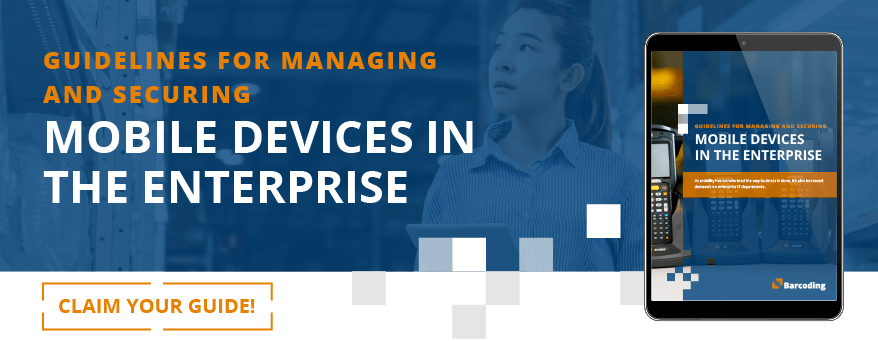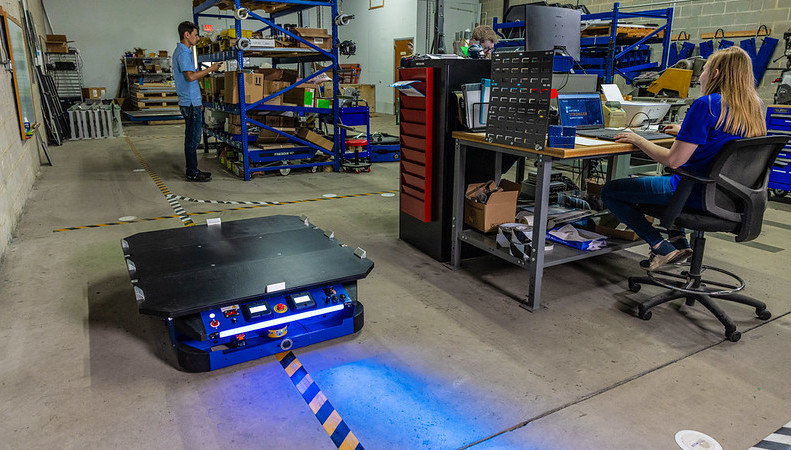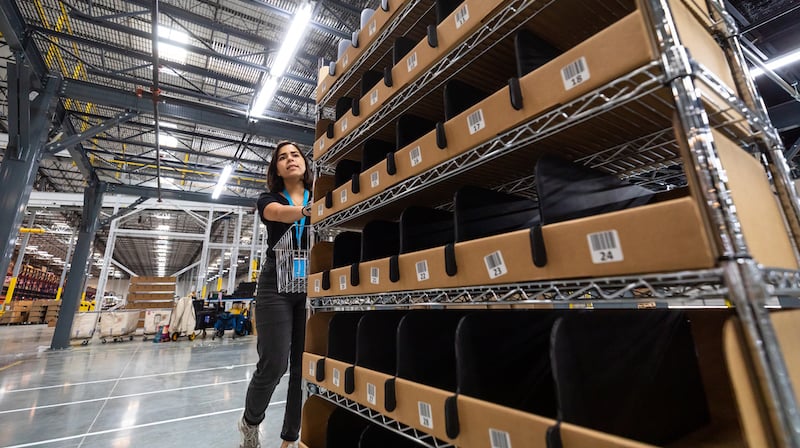Mobile devices have transformed virtually every industry. They streamline tasks, reduce errors, and connect workers with the information they need to do their jobs wherever they are.
Organizations whose employees use mobile devices on the job benefit from increased efficiency and productivity. At the same time, these companies face constantly evolving risks to information security.
While mobile devices support productivity, they’re vulnerable to theft, loss, and security breaches, as attacks are increasingly designed to target them. A hardware asset management system can make it easier to monitor company devices throughout their lifecycle—but people need to do their part, too.
Companies and employees share responsibility for securing valuable assets. Alongside investments to keep equipment secure, businesses need to educate and engage employees in security practices to protect sensitive personal and enterprise data.
Whether deploying company-procured smartphones or allowing employees to access enterprise apps and data with their personal devices, businesses that are proactive about their digital transformation implement policies that enhance security, support uninterrupted productivity, and protect valuable assets—including data.
Here are seven essential measures every mobility employer should have in place:
- An organization-level mobile device policy
- Strong awareness of organizational risks
- Granular knowledge of the enterprise user, device, and applications environment
- Security and privacy safeguards
- User training and education for all mobility employees
- Ongoing vigilance and regular policy reviews/updates
- Access to trusted expertise in technology integration
1. Enterprise-Level Mobile Device Policies
Whether you issue company devices to employees or implement a bring-your-own-device (BYOD) policy, written standards clarify expectations, best practices, and do’s and don’ts for workers accessing company data, networks, applications, and/or hardware. Both types of device policies have pros and cons, and not all organizations can simply choose. Your regulatory environment may rule out a BYOD option (or you may decide the risk is too great to allow BYOD).
Company-procured devices require lifecycle management, but they’re also easier to remotely wipe or disable if misplaced or stolen. An asset management system lightens the lift for IT. In a large organization using potentially thousands of devices, the benefits multiply quickly.
Providing company devices lends control over device types, operating systems, allowed apps and configurations, security settings, etc. A security policy helps employees understand the potential impacts of noncompliance—and a mobile device management solution can help IT monitor, implement proactive measures, and take steps quickly if a problem arises.
A BYOD policy adds complexity because personal devices can involve even more data risk and privacy concerns. Along with required use of a VPN or other baseline protections, companies should consider apps on employee devices that could present threats, and whether to permit those apps or even implement work containerization.
A BYOD policy also needs to address what happens when a worker’s personal device is lost or stolen, or when they terminate employment.
RELATED: Download Barcoding’s free Guide to Managing and Securing Enterprise Mobile Devices
2. Awareness of Organizational Risk
A 360-degree risk assessment will consider all the ways mobile devices access, transmit, receive, or store organizational information. This includes risks to data associated with clients, customers, or patients; employees; vendors; or other strategic partners.
What devices are used to interact with organizational applications and systems? Are they employee-owned, organization-issued, or both? What systems, data, or applications will they interact with? Are regulatory compliance issues involved?
Devices can be lost or stolen. They can be subject to cyberattacks that introduce malware or viruses. They can access company data or systems on unsecured WiFi networks and communications can be intercepted. Passwords can be compromised.
Threats can come from inside and outside the organization. An effective breach response depends on a clear-eyed view of physical risks, device attack risks, malicious code, opportunities to intercept communications, and employees who could pose threats, intentionally or otherwise. Inadvertent risk-taking can include downloading company data to a device’s memory, using external email services, installing untrustworthy applications, or failing to update operating systems or security software.
3. Granular Knowledge of Users, Devices, Operating Systems & Applications
Streamlined, on-demand access to the most important details associated with any enterprise mobile device gives IT leadership not only greater control over device and data security, but also an all-in-one management solution that can enable IT admins to address all of these concerns in one place.
It can also help achieve a new level of visibility and awareness of the organizational mobile environment: Users, devices, operating systems, software applications, configurations, security settings, update history, even details like device maintenance history, service records and contracts can be visible on demand. The device performance and usage data captured by an asset management system can be especially valuable when it comes to IT decision-making.
Companies that use shared mobile devices can reap even more benefits from close monitoring and IT asset management. A system like VeriMy™ that enables employees to check in and out with a simple enterprise login shaves seconds or minutes off each user’s check-in. In many mobile environments, those added seconds of productivity multiply fast.
A system that monitors device performance and battery health can help IT be even more proactive in their device management, and that can mean more productive, more satisfied employees. In addition to these capabilities, Barcoding’s IntelliTrack® asset tracking solution can even help locate a misplaced device on-premises with an audible ping.
4. Security & Privacy Safeguards
Security practices should be clearly outlined in any mobile user policy, and can run the gamut from restricting device use to company-approved activities and applications, to action steps to take in the event of a breach or lost device. Safeguards typically include:
- User authentication
- Encryption
- Device firewalls
- Security software
- Practice guidelines such as system updates and backups
- Enterprise implementation of a mobile threat defense tool
5. Employee Training & Education on Mobile Device Security
Ongoing training and communications from IT to device users helps ensure all employees are aware of threats as they emerge, and take steps to mitigate the risks. But they also help communicate the role every worker plays in helping protect sensitive company information. Mobile workers should receive regular training, education, and updates on topics such as:
- Device safety and physical security
- Acceptable and prohibited applications
- Password policies and multifactor authentication
- VPN use
- System updates
- Phishing and other scams
- Security enhancements as they’re rolled out
6. Ongoing Vigilance & Regular Policy Reviews
With the amount of effort that goes into developing data, user, and security policies, they can be daunting to revisit on a regular basis. But policies should never be considered final; most experts agree that at a minimum, reviews should happen on an annual basis. But events can precipitate a need for more frequent reviews:
- Breaches or other cybersecurity incidents
- Introducing new technologies, applications, or process automation
- Operational changes that lead to altered communication or collaboration needs
- New compliance, legal, and/or contract requirements
7. A Trusted Technology Integration Partner
If your organizational IT leadership is like most today, they’re already overburdened with day-to-day tasks involved with mobile device deployments, troubleshooting, and solving problems for users. An expert in technology integration acts as an extension of your own team, helping you identify and implement the right solutions and practices to help all your enterprise users do their best work—while protecting your data and physical assets and helping you make data-informed decisions about technology innovations that will support ongoing success.
Learn more about how an enterprise asset management solution can reduce workloads, improve efficiencies, and deliver enterprise visibility to inform business decisions and protect your most valuable assets. Just click here or below to download our free guide.







